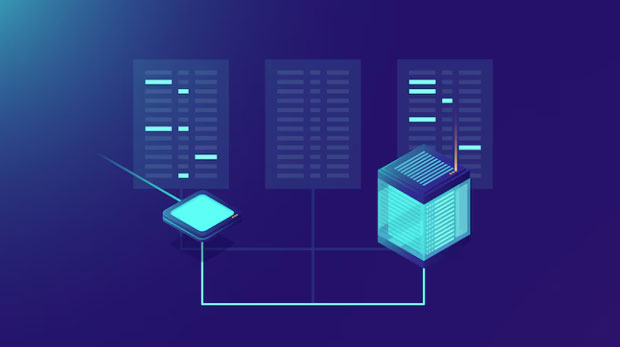Using free proxies can be an effective way to maintain anonymity online, but it often comes with security risks, particularly in relation to DNS leaks. DNS leaks occur when the DNS requests made by your device bypass the proxy and are sent directly to your Internet Service Provider (ISP), potentially exposing your browsing activity. While free proxies may not always offer the level of security required to protect your privacy, taking the right precautions can help mitigate these risks. In this article, we will explore how DNS leaks occur, how they impact online security, and most importantly, how to prevent them when using free proxies. Understanding DNS Leaks and Their ImpactDNS (Domain Name System) is a protocol used to translate human-readable domain names into IP addresses. Whenever you access a website, your device sends a DNS request to a server to resolve the domain name into an IP address. Ideally, when using a proxy, these requests should be routed through the proxy server to maintain privacy. However, in the case of a DNS leak, these requests may be sent directly to your ISP’s DNS server, revealing the websites you are visiting.DNS leaks can compromise privacy in several ways:1. Exposure of Browsing Activity: If your DNS requests are sent directly to your ISP, they have the ability to monitor and log your activity, which defeats the purpose of using a proxy to anonymize your connection. 2. Vulnerability to Surveillance: Governments and other entities may be able to access your browsing data if they have access to your ISP’s logs, putting you at risk of surveillance and data collection. 3. Loss of Anonymity: The main benefit of using a proxy is to mask your IP address and anonymize your browsing. A DNS leak can expose your real location, reducing your online anonymity.Therefore, understanding how to prevent DNS leaks is essential for maintaining privacy and security while using free proxies.How DNS Leaks Happen with Free ProxiesFree proxies often lack the robust security features found in premium services, which makes them more prone to DNS leaks. Here are some common causes:1. Misconfigured Proxy Settings: Free proxies may not be correctly configured to route DNS requests through the proxy server. In these cases, your DNS requests are sent directly to your ISP, exposing your browsing activity.2. Insecure Proxy Protocols: Many free proxies use outdated or insecure protocols that do not adequately handle DNS requests. As a result, DNS leaks can occur even if the proxy connection itself is active.3. DNS Requests Not Handled by Proxy: Some proxies simply fail to handle DNS requests at all, causing them to be routed outside the encrypted connection. When this happens, your ISP can see the websites you are accessing.4. Lack of DNS Leak Protection Features: Many free proxies do not have built-in DNS leak protection, leaving users vulnerable to unintended exposure.Steps to Prevent DNS Leaks When Using Free ProxiesDespite the potential risks, there are several steps you can take to reduce the likelihood of DNS leaks when using free proxies.1. Use a VPN in Combination with a ProxyOne of the most effective ways to prevent DNS leaks is by using a Virtual Private Network (VPN) alongside your free proxy. A VPN encrypts your entire internet traffic, including DNS requests, and ensures that they are routed through a secure, remote server. This adds an extra layer of security to your proxy setup and prevents DNS requests from being exposed to your ISP.However, it is crucial to choose a reliable VPN provider that offers DNS leak protection. Many premium VPN services have this feature, but it’s also possible to find free VPNs that offer DNS leak protection, though they may come with limitations.2. Modify DNS Settings ManuallyAnother solution is to manually configure your DNS settings to use a third-party DNS server instead of the default DNS servers provided by your ISP. By doing so, you can route your DNS requests through a more secure, privacy-focused server, which helps prevent leaks. Popular third-party DNS providers like Google Public DNS, Cloudflare, and OpenDNS offer free, secure DNS services.To configure this, you will need to adjust the network settings on your device (whether it's your computer, smartphone, or router). Once configured, all your DNS queries will go through your chosen DNS server, even if you’re using a free proxy.3. Use a Proxy That Offers DNS Leak ProtectionSome free proxies are designed with built-in DNS leak protection. These proxies automatically route DNS queries through the proxy server, preventing leaks. While such proxies may be more difficult to find, they do exist, and using one can significantly reduce your risk of a DNS leak.Before using a proxy, you should check if it explicitly mentions DNS leak protection in its features or privacy policy. This feature ensures that all DNS requests are handled by the proxy server and not by your ISP’s DNS servers.4. Test for DNS Leaks RegularlyIt is important to regularly test your connection for DNS leaks. Several online tools allow you to check if your DNS requests are being routed securely through your proxy or VPN. By running these tests, you can ensure that your browsing activity is not being exposed to your ISP.If a leak is detected, you can take immediate action to fix the issue by switching to a more secure DNS server, using a VPN, or choosing a proxy with better leak protection features.5. Enable WebRTC Leak ProtectionWebRTC (Web Real-Time Communication) is a technology that allows websites to access your local IP address, even when you're using a proxy or VPN. This can also lead to potential DNS leaks, as your local IP address may be exposed.To prevent WebRTC leaks, you can disable WebRTC in your browser settings or use browser extensions that block WebRTC requests. Additionally, many VPN services provide WebRTC leak protection, which can further safeguard your privacy.6. Choose a Trustworthy Proxy ProviderIf you choose to use a free proxy, ensure that it is reputable and well-reviewed. Not all free proxies are secure, and some may even compromise your privacy by logging your activities. Look for proxies that prioritize security, offer DNS leak protection, and do not store any user logs.While free proxies can be convenient, they are often limited in terms of security features. For enhanced privacy and security, consider upgrading to a paid proxy service that offers more robust protection against DNS leaks.DNS leaks are a serious concern when using free proxies, as they can expose your online activity and compromise your privacy. By understanding how DNS leaks occur and taking the appropriate steps to prevent them, you can significantly enhance your online security. Using a VPN, modifying your DNS settings, choosing proxies with DNS leak protection, and regularly testing for leaks are all essential practices in ensuring your browsing activity remains private.While free proxies may offer a convenient way to hide your IP address, they come with certain risks that need to be managed. By being proactive and cautious, you can continue to enjoy the benefits of anonymity online without the fear of DNS leaks exposing your activity to unwanted parties.
Apr 10, 2025
![arrow]()



























































